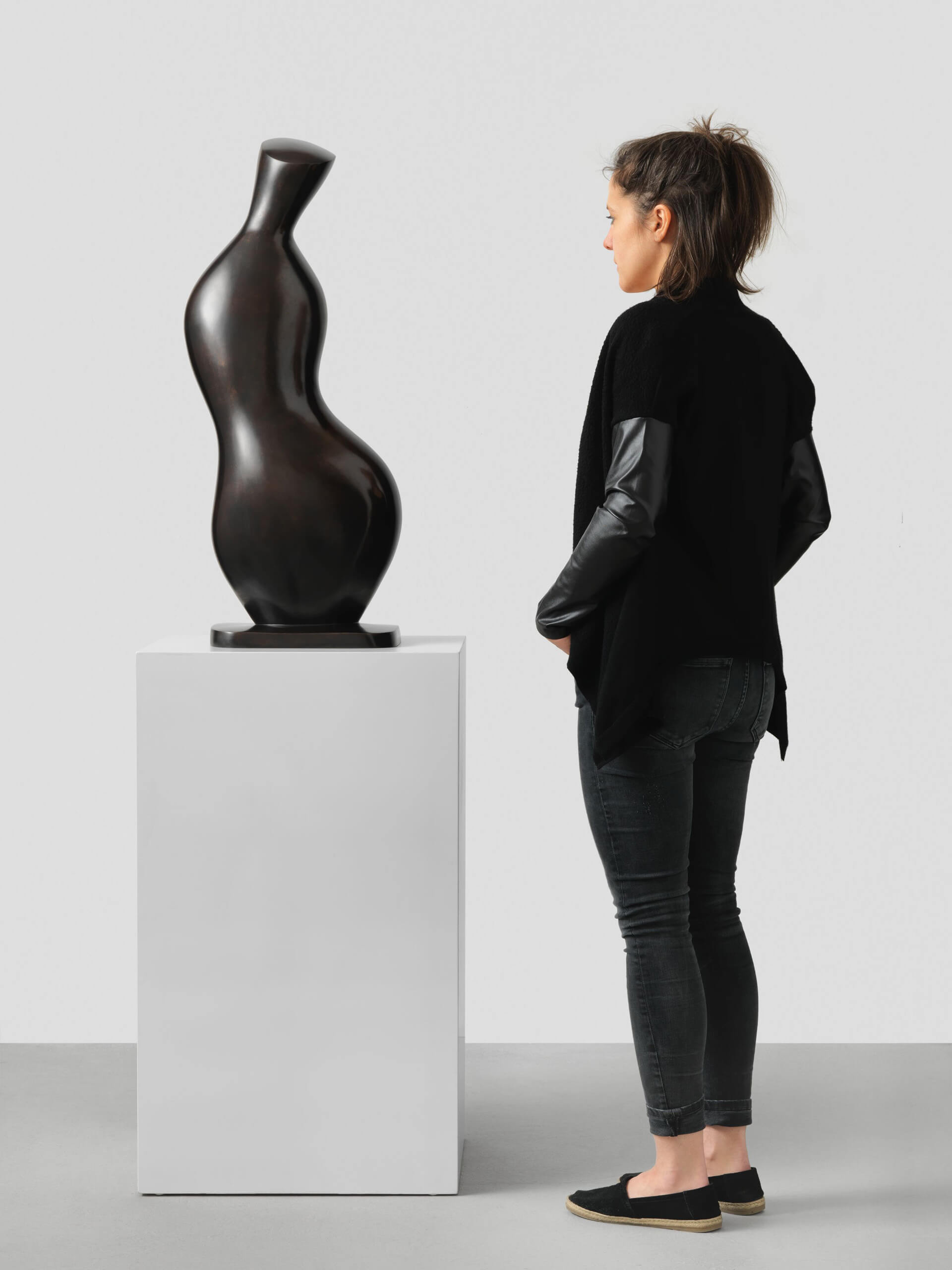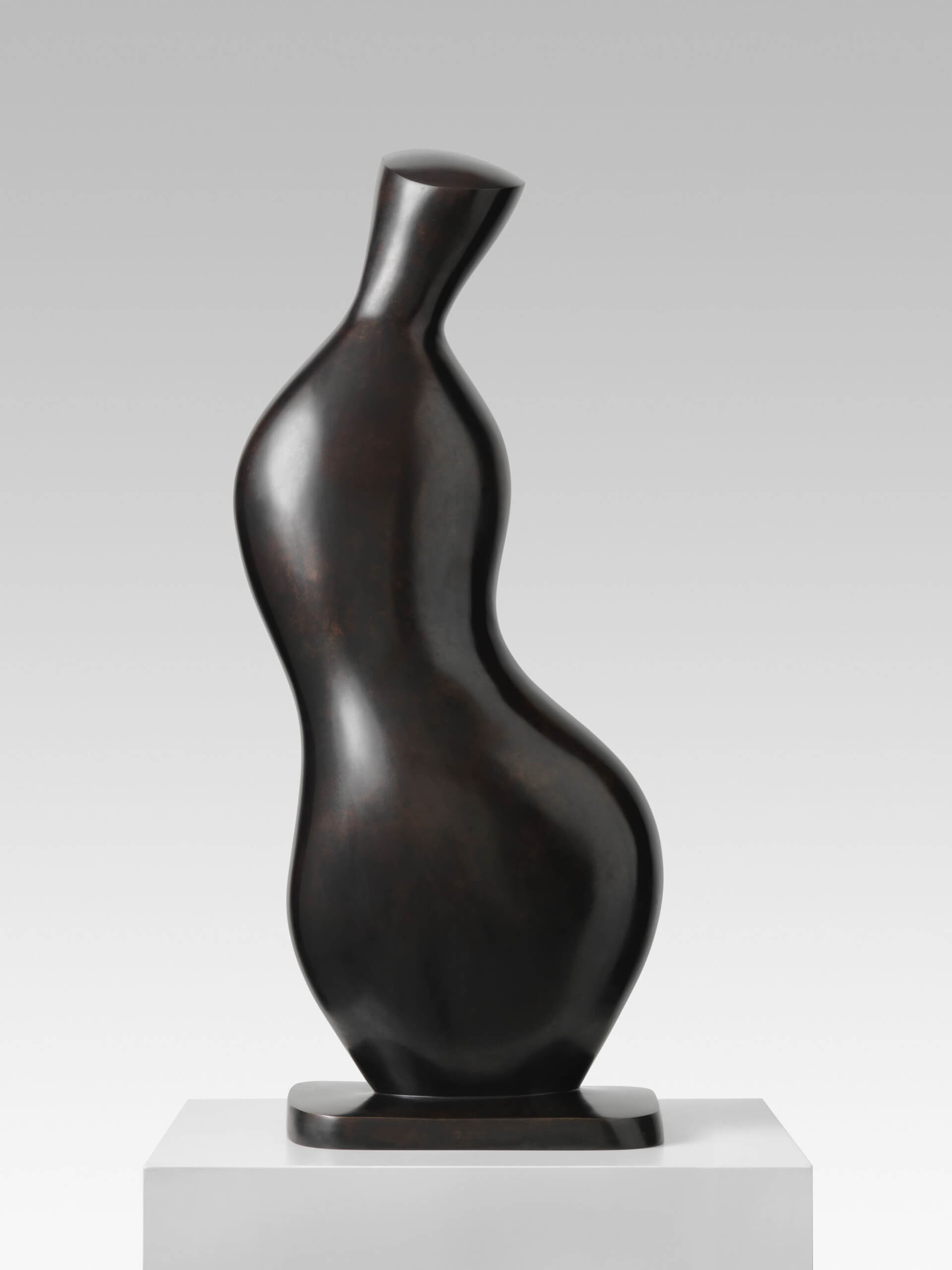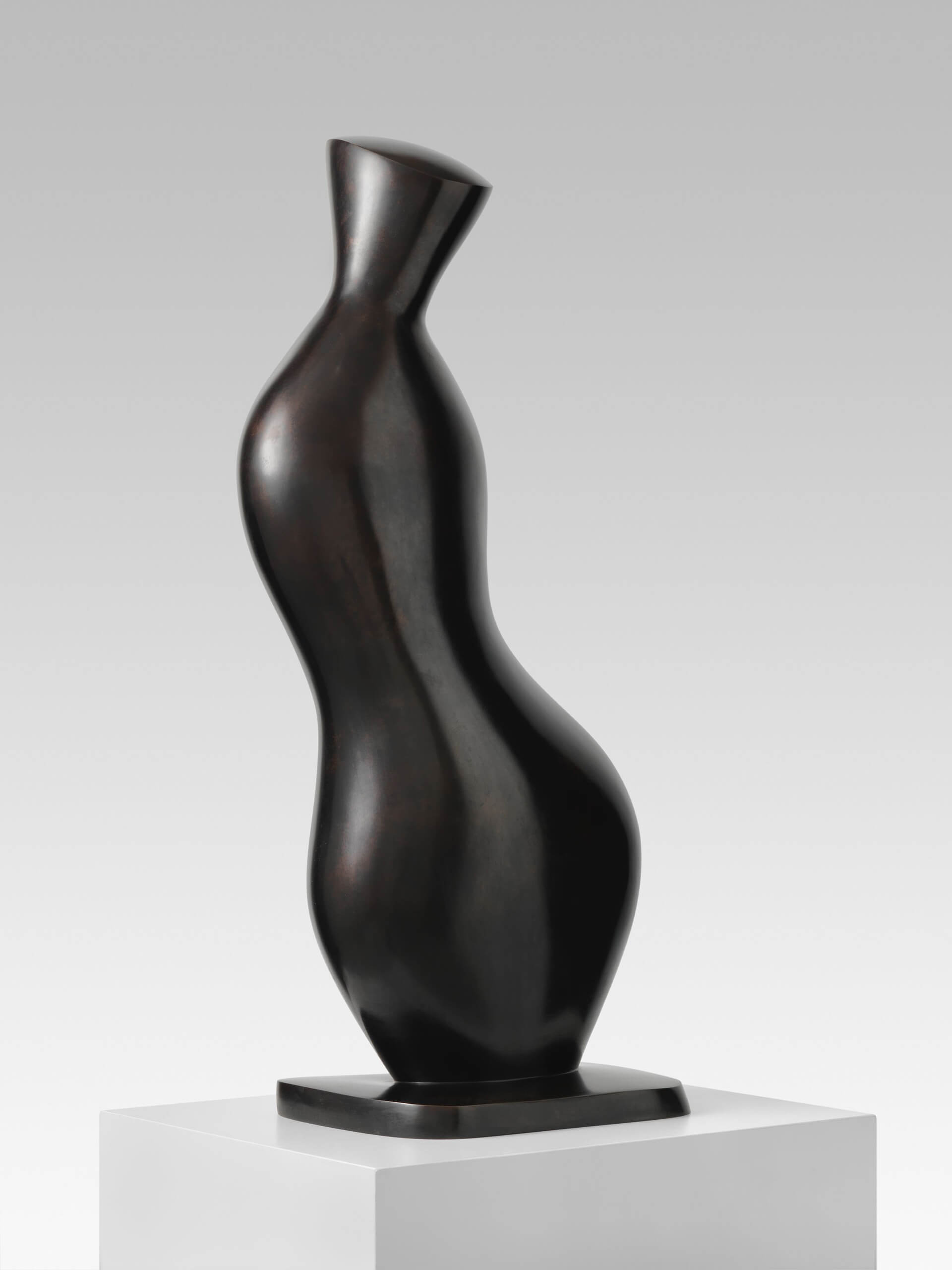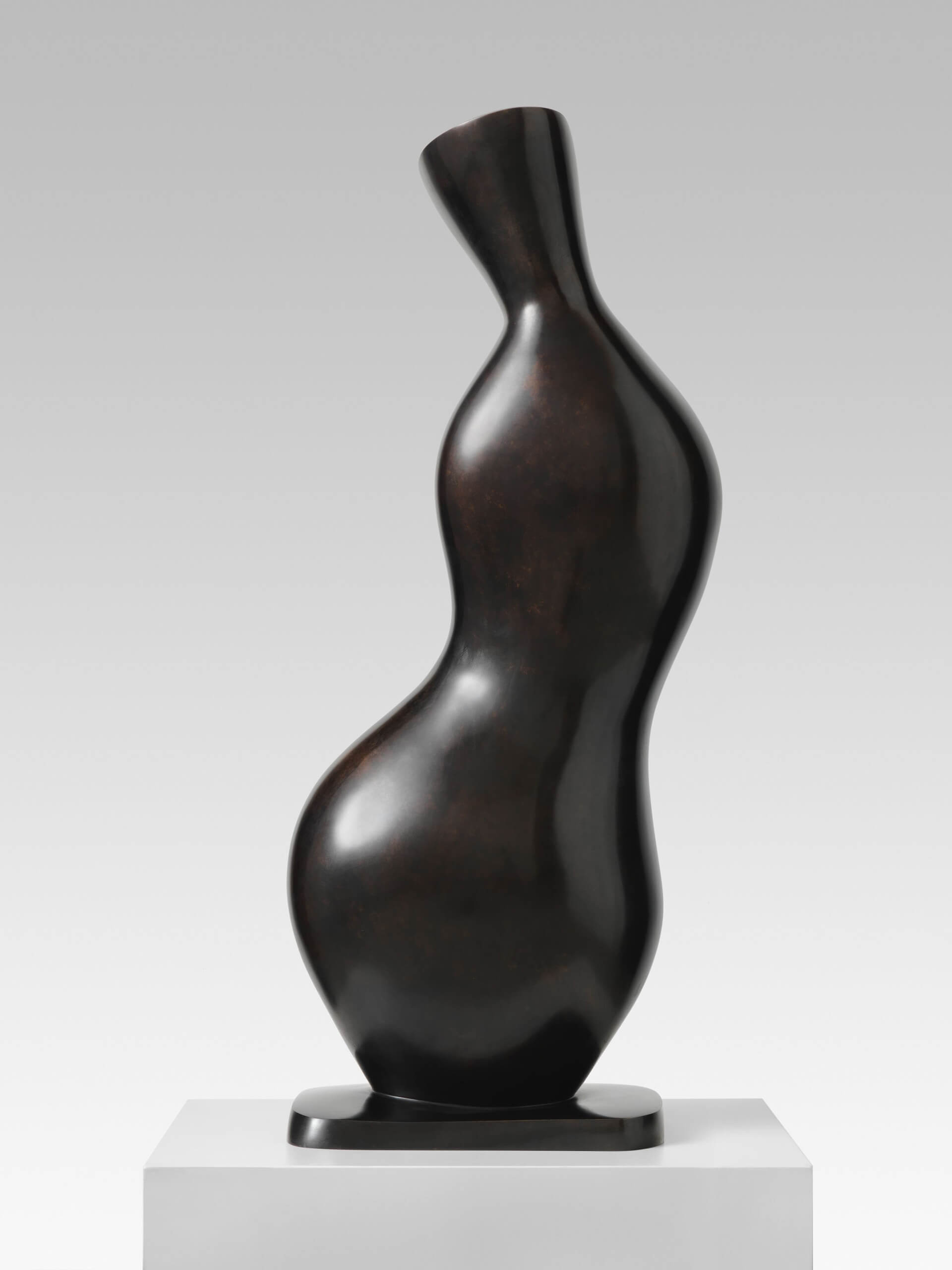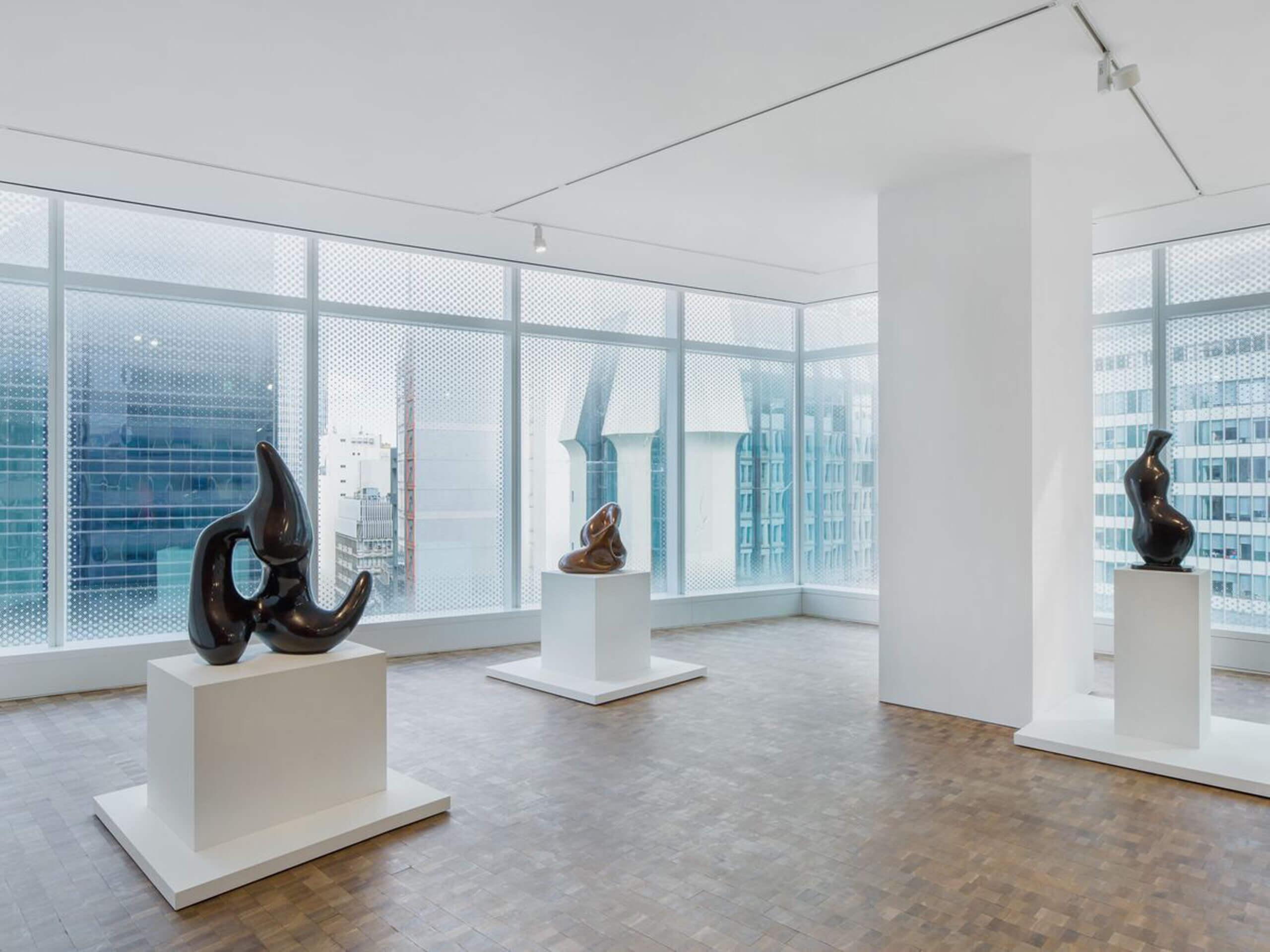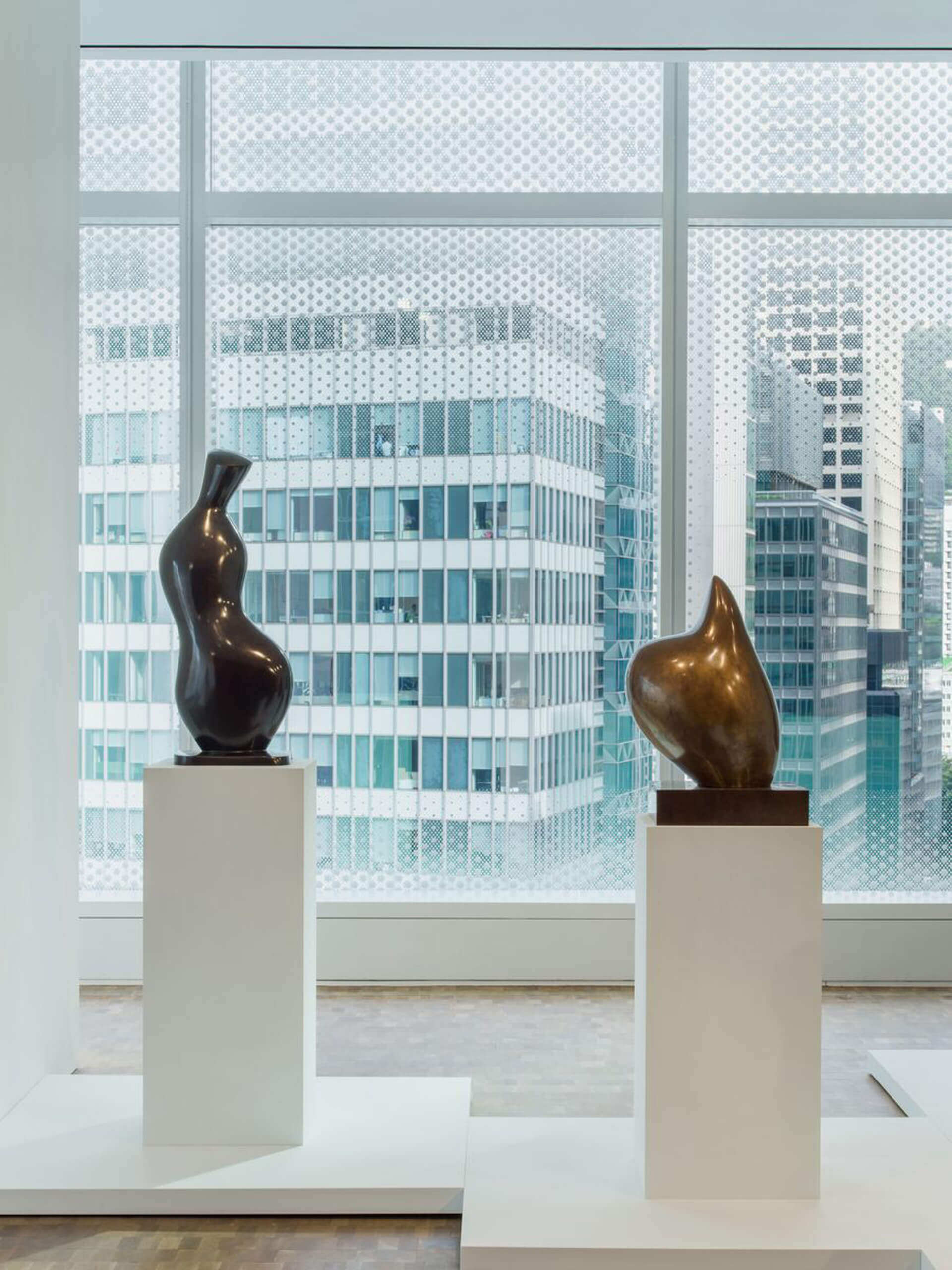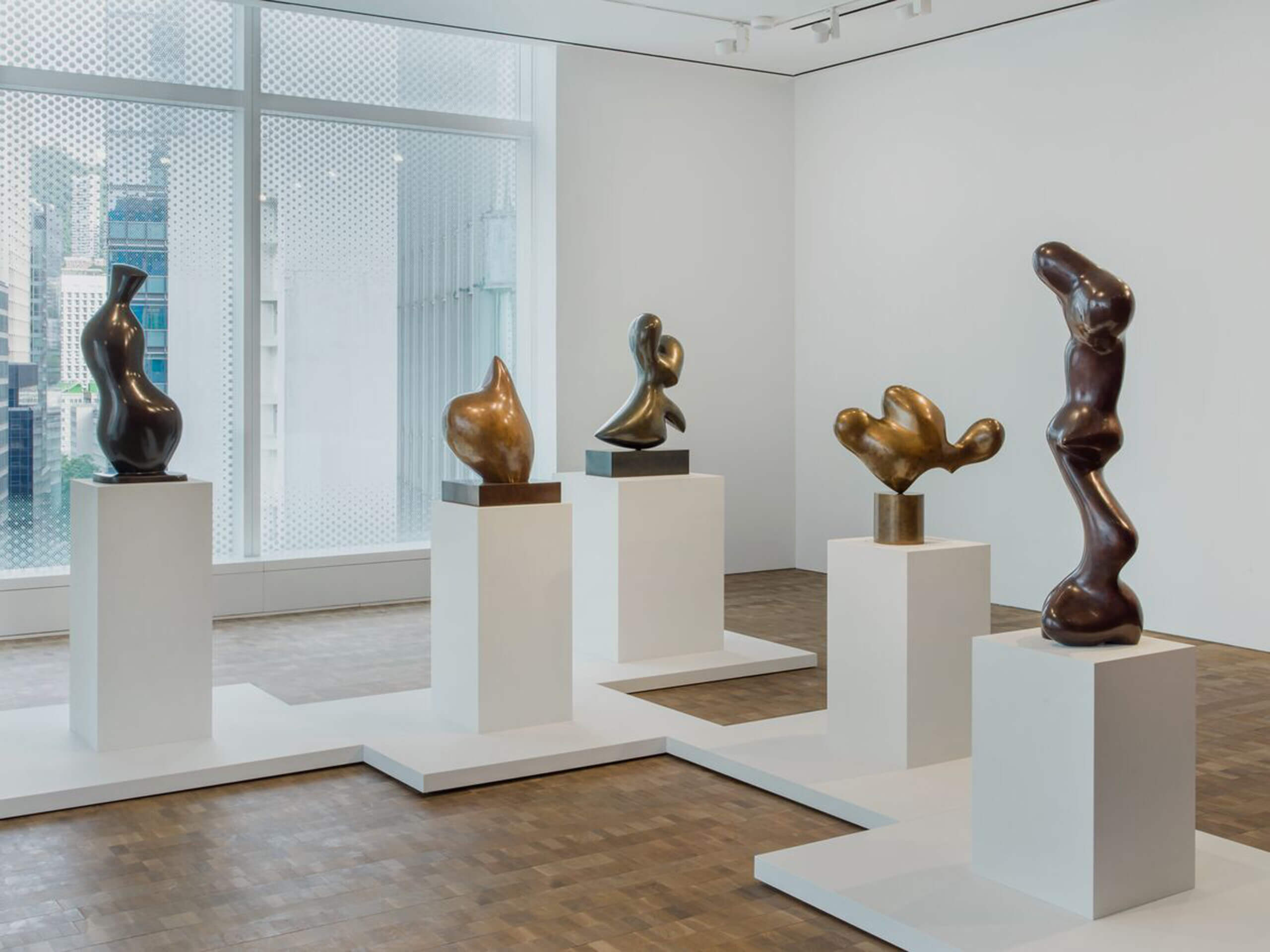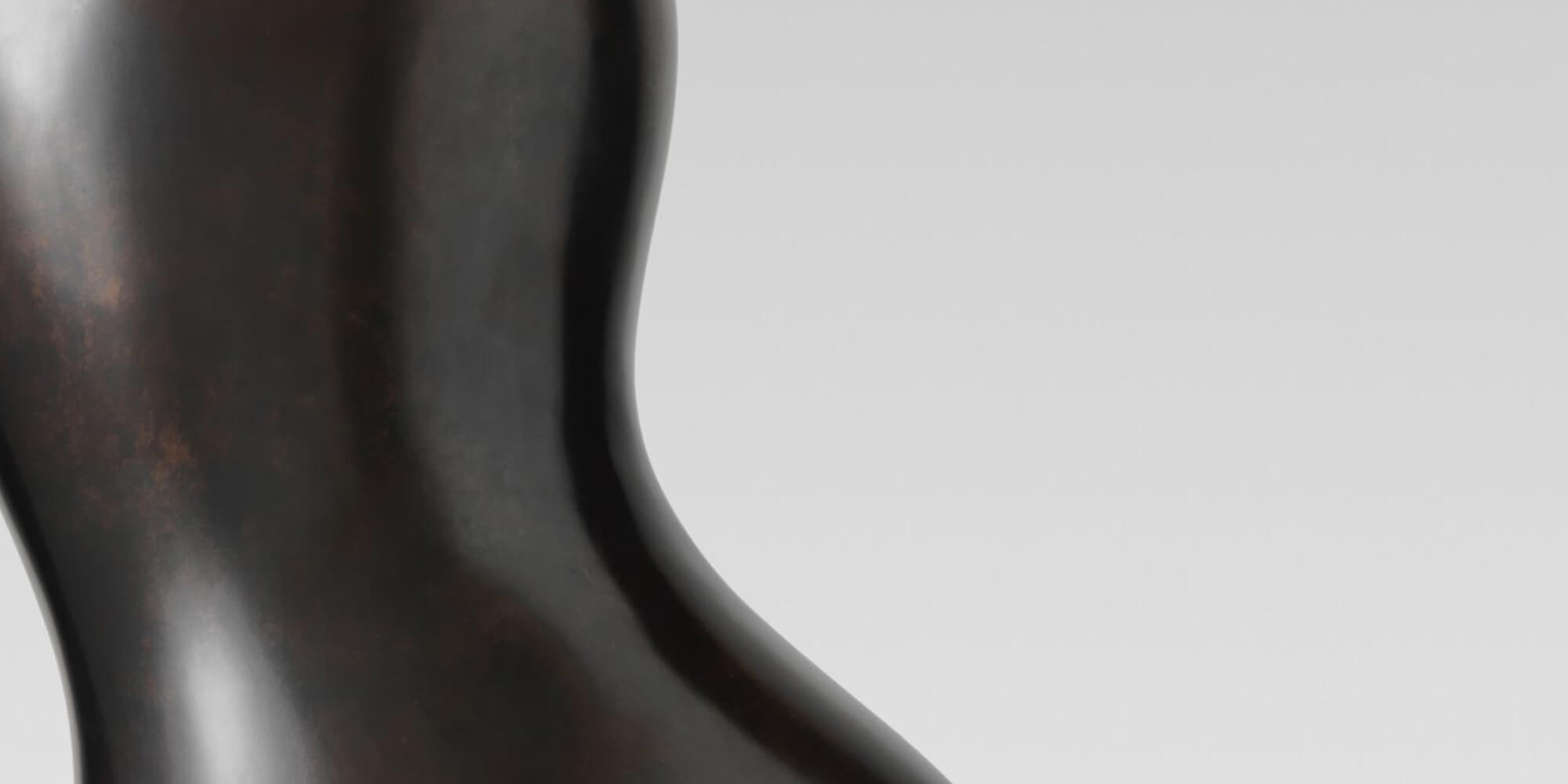
Hans Arp
Torso-Amphore / Torse-amphore<br>(Torso-Amphora)
Torso-Amphore / Torse-amphore
(Torso-Amphora)
1962 (cast 2012) Bronze Edition of 3 + 1 AP 90 x 30 x 20 cm / 35 3/8 x 11 3/4 x 7 7/8 in
Conceived in 1962, Arp’s 'Torso-Amphore / Torse-amphore' (Torso-Amphora) embodies the rhythmic energy and elegance that came to be expected of the artist’s oeuvre. During this period—the golden age of his career—he continued to produce unblemished surfaces and smooth curvilinear forms. Since his involvement with Dada and Surrealism in the 1920s and 1930s and until the end of his life, Arp submitted to chance and intuition as guiding forces of his work. Recognized throughout his career for his ability to transcend formal boundaries, his amorphous compositions open up to vast associations and interpretations.
'I put my trust in the example of seeds, stars, clouds, plants, animals, men, and finally my own innermost being.'—Hans Arp
Arp equally acknowledges Classical art in his title as ‘Torso-Amphora’ refers to a coalescence—the body-as-ancient vessel. A container most commonly used for storing wine, the amphora also served as a prize and an ornamental object, often decorated using the distinctive red figure technique set against a black background. This reference was likely inspired by Arp's frequent visits to Greece and his appreciation of the Hellenistic period.
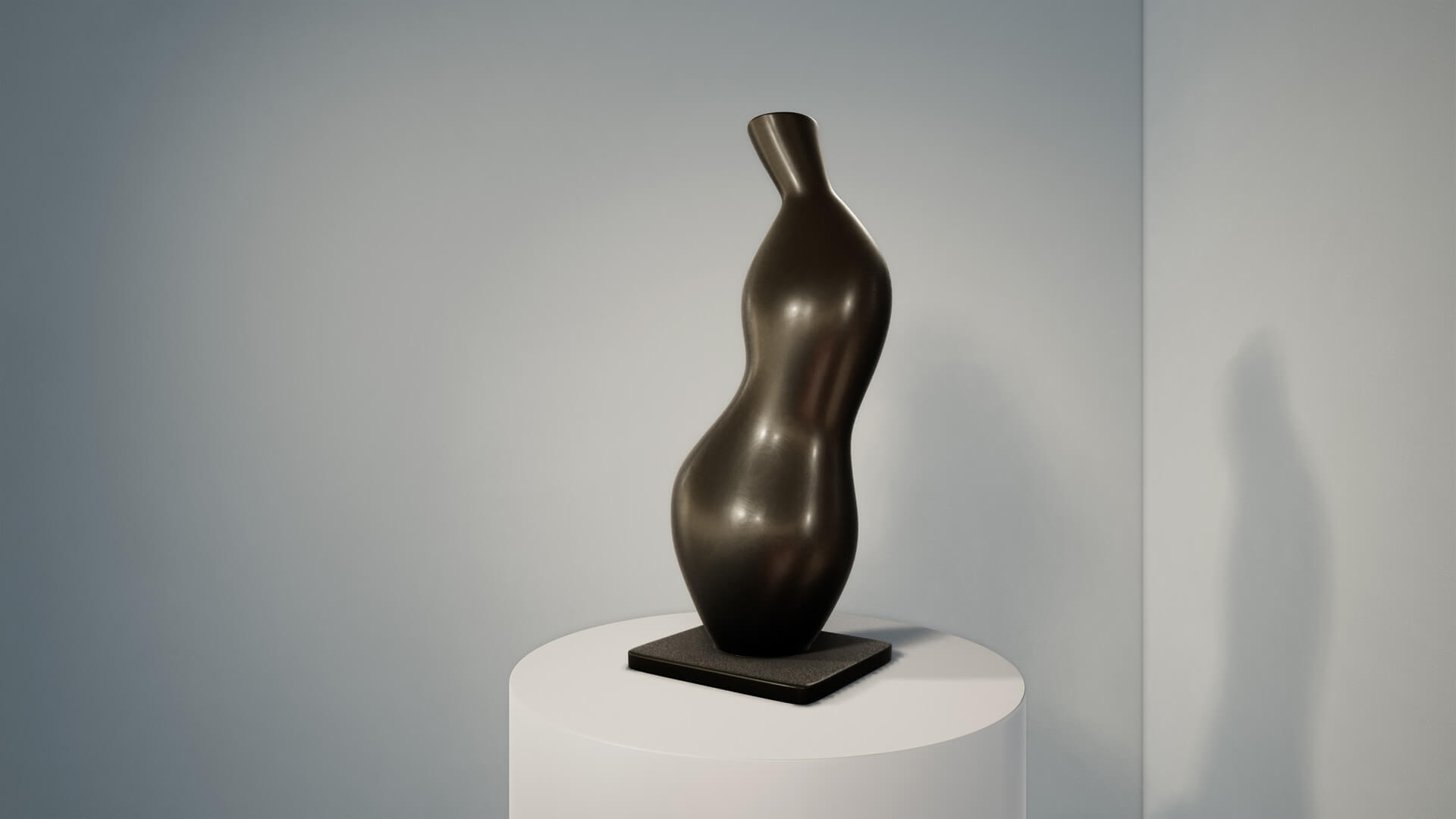
With its sensual pear-like curves, ‘Torso-Amphora’ evinces a vernacular often seen in Arp’s later output, exploring biomorphism in such a way as to unveil the poetic elements hidden in everyday forms. The work is redolent of metamorphosis and change, with an emphasis on verticality, frequently seen in his later years as a reference to infinity. Emphasizing the dichotomies between hard angles and soft arcs, Arp attempted to draw on the innate logic and patterns of nature.
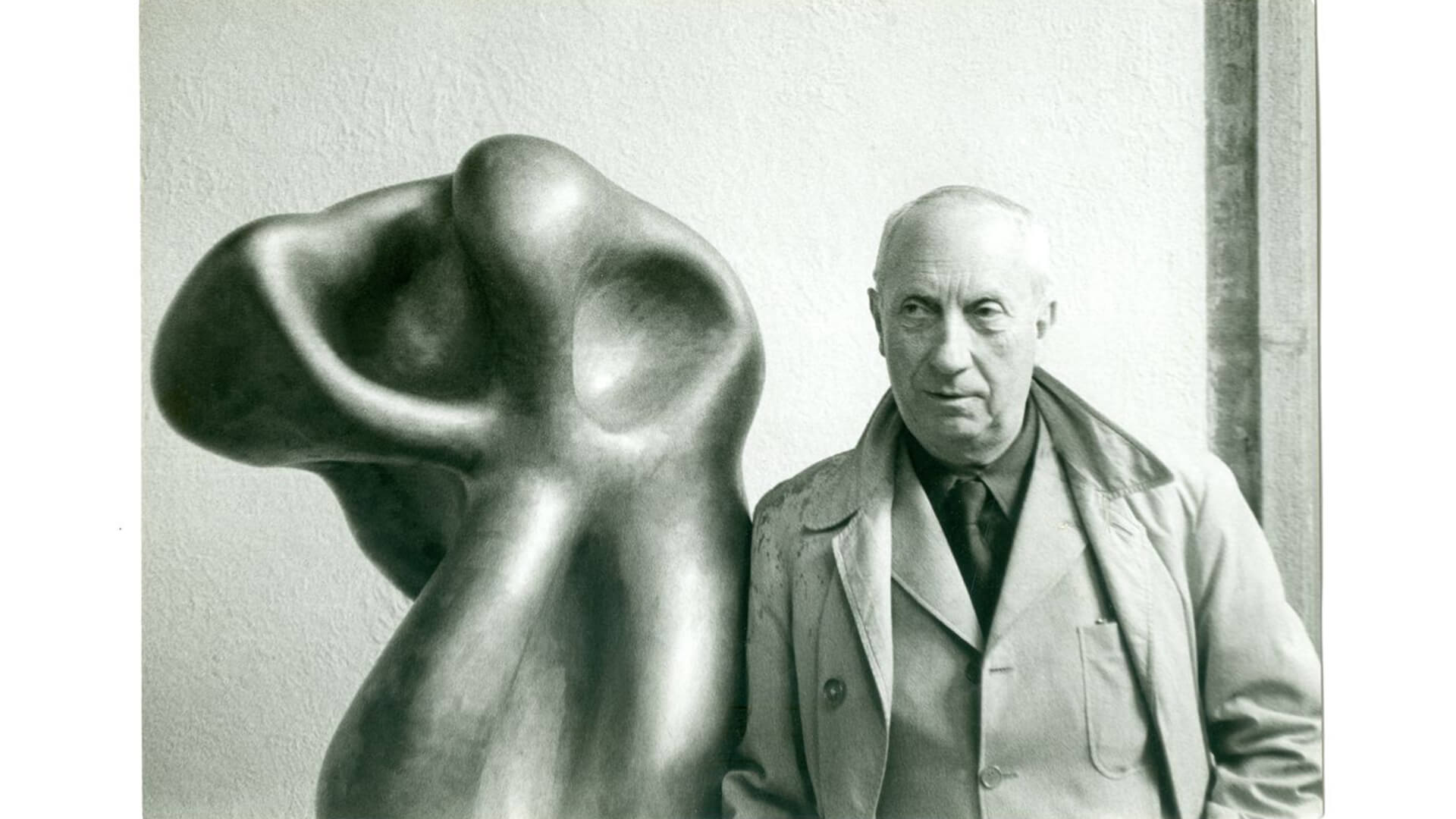
Hans Arp
Hans Arp is a familiar figure of classical Modernism and was a key contributor in the development of Dada and Surrealism in the early twentieth century. Focusing his attention on everyday objects, Arp created his own unique ‘object language’ using a nonsensical vocabulary: plate, fork, knife, clock, tie, moustache, lips, breasts. With a playful hand he juggled the dominant art currents of the early twentieth century, combining seemingly contradictory geometric and organic formal idioms with the artistic ‘-isms’ of his epoch.
